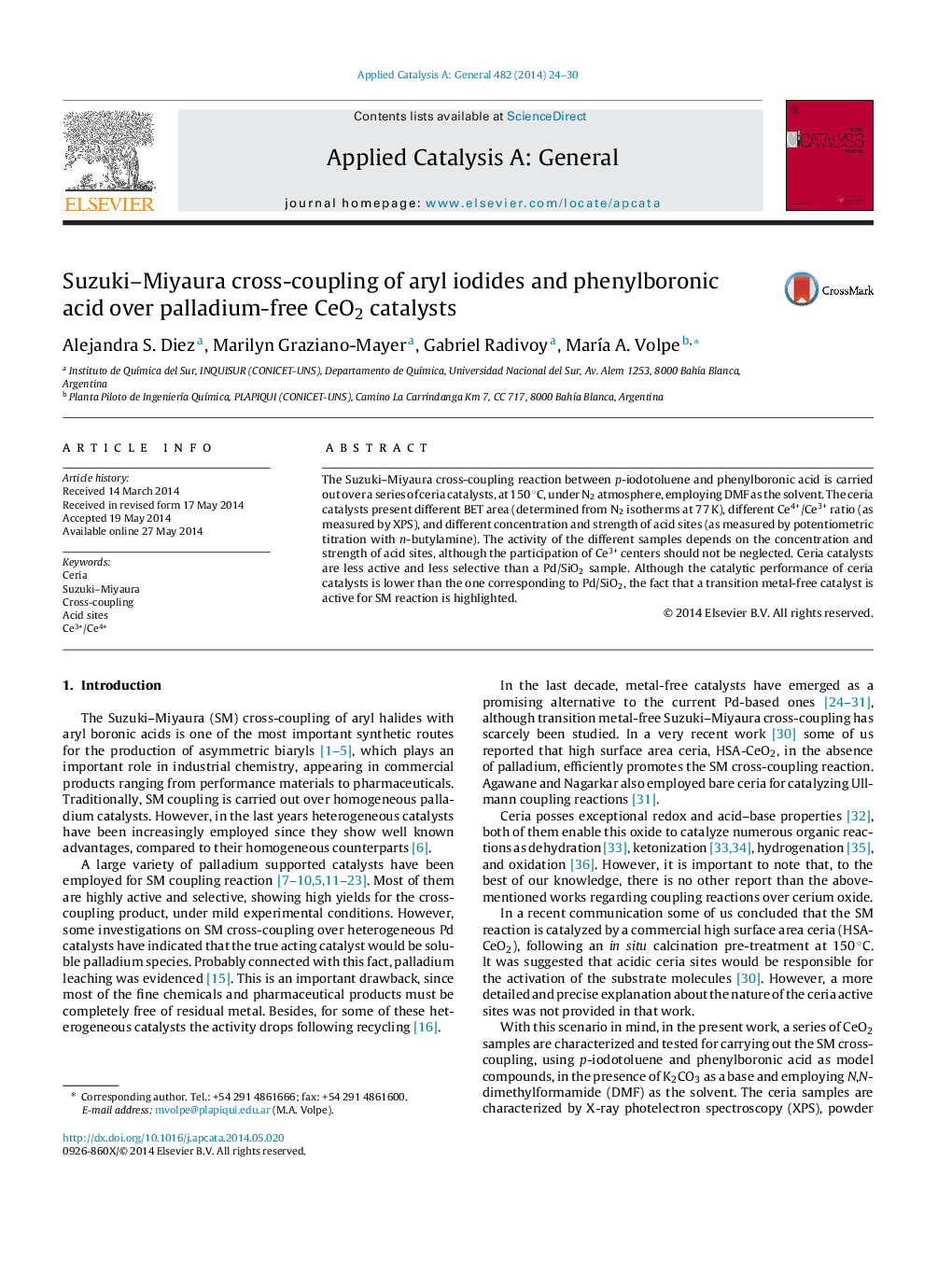| Article ID | Journal | Published Year | Pages | File Type |
|---|---|---|---|---|
| 39580 | Applied Catalysis A: General | 2014 | 7 Pages |
•The Suzuki–Miyaura reaction is carried out over a noble metal-free catalyst.•Ceria is active for the cross coupling of p-iodotoluene and phenylboronic acid.•Ceria activity and selectivity for the SM reaction depends on pre-treatment.•Acid sites on ceria surface are active for Suzuki–Miyaura reaction.
The Suzuki–Miyaura cross-coupling reaction between p-iodotoluene and phenylboronic acid is carried out over a series of ceria catalysts, at 150 °C, under N2 atmosphere, employing DMF as the solvent. The ceria catalysts present different BET area (determined from N2 isotherms at 77 K), different Ce4+/Ce3+ ratio (as measured by XPS), and different concentration and strength of acid sites (as measured by potentiometric titration with n-butylamine). The activity of the different samples depends on the concentration and strength of acid sites, although the participation of Ce3+ centers should not be neglected. Ceria catalysts are less active and less selective than a Pd/SiO2 sample. Although the catalytic performance of ceria catalysts is lower than the one corresponding to Pd/SiO2, the fact that a transition metal-free catalyst is active for SM reaction is highlighted.
Graphical abstractFigure optionsDownload full-size imageDownload high-quality image (117 K)Download as PowerPoint slide
